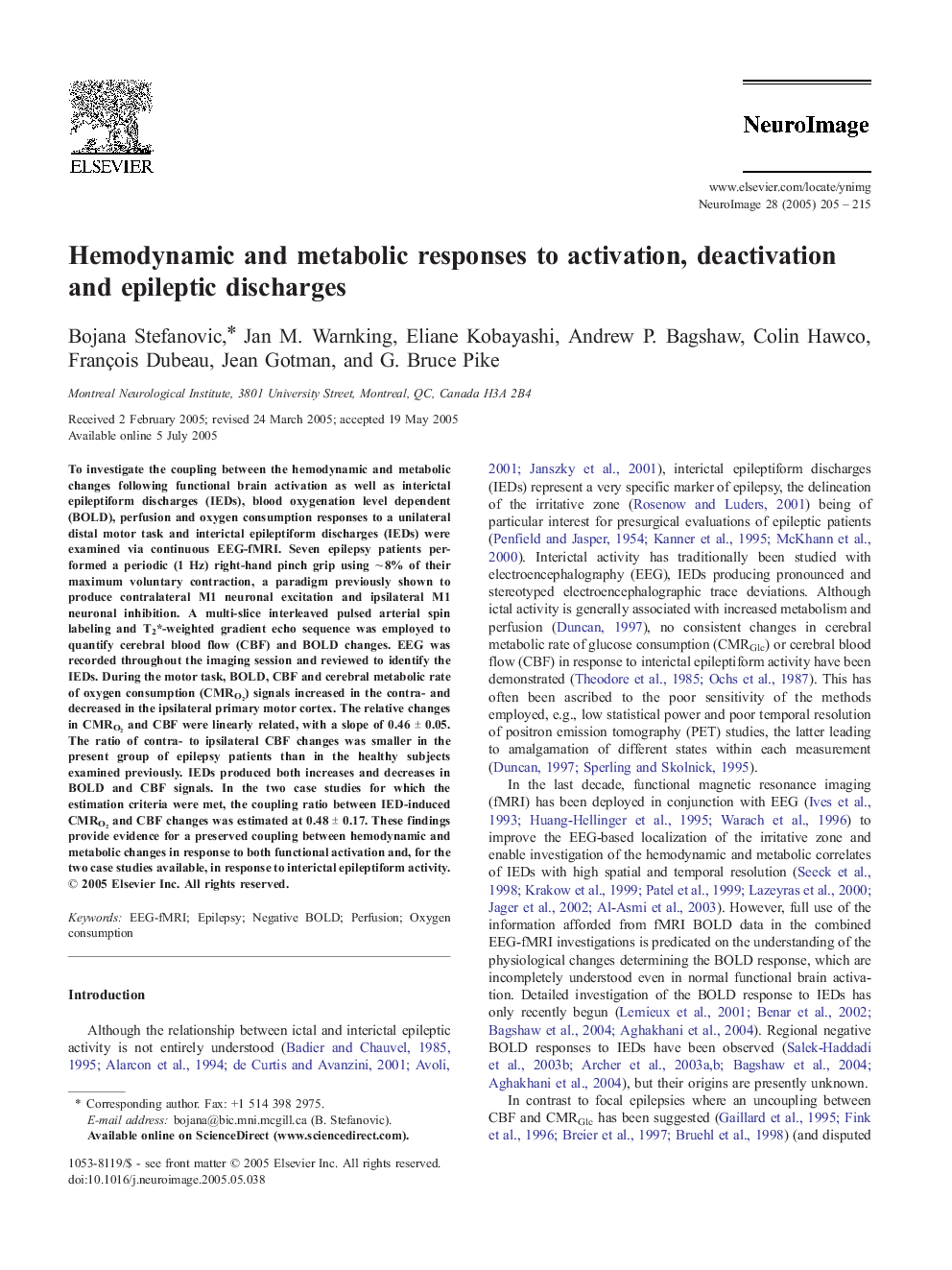| Article ID | Journal | Published Year | Pages | File Type |
|---|---|---|---|---|
| 9197773 | NeuroImage | 2005 | 11 Pages |
Abstract
To investigate the coupling between the hemodynamic and metabolic changes following functional brain activation as well as interictal epileptiform discharges (IEDs), blood oxygenation level dependent (BOLD), perfusion and oxygen consumption responses to a unilateral distal motor task and interictal epileptiform discharges (IEDs) were examined via continuous EEG-fMRI. Seven epilepsy patients performed a periodic (1 Hz) right-hand pinch grip using â¼8% of their maximum voluntary contraction, a paradigm previously shown to produce contralateral MI neuronal excitation and ipsilateral MI neuronal inhibition. A multi-slice interleaved pulsed arterial spin labeling and T2*-weighted gradient echo sequence was employed to quantify cerebral blood flow (CBF) and BOLD changes. EEG was recorded throughout the imaging session and reviewed to identify the IEDs. During the motor task, BOLD, CBF and cerebral metabolic rate of oxygen consumption (CMRO2) signals increased in the contra- and decreased in the ipsilateral primary motor cortex. The relative changes in CMRO2 and CBF were linearly related, with a slope of 0.46 ± 0.05. The ratio of contra- to ipsilateral CBF changes was smaller in the present group of epilepsy patients than in the healthy subjects examined previously. IEDs produced both increases and decreases in BOLD and CBF signals. In the two case studies for which the estimation criteria were met, the coupling ratio between IED-induced CMRO2 and CBF changes was estimated at 0.48 ± 0.17. These findings provide evidence for a preserved coupling between hemodynamic and metabolic changes in response to both functional activation and, for the two case studies available, in response to interictal epileptiform activity.
Related Topics
Life Sciences
Neuroscience
Cognitive Neuroscience
Authors
Bojana Stefanovic, Jan M. Warnking, Eliane Kobayashi, Andrew P. Bagshaw, Colin Hawco, François Dubeau, Jean Gotman, G. Bruce Pike,
